On Tuesday 6 May, we were driven to the Sanctuary of Betfage [Bethphage: from 'beth paghah'; 'House of un-ripe figs'] - located on the eastern part of the Mount of Olives. It is the place from where Jesus sent his disciples to find a foal of a donkey upon which he would ride into Jerusalem It is the site where Jesus entered into the Holy City while his disciples and the crowd warmly sang 'Hosanna'.
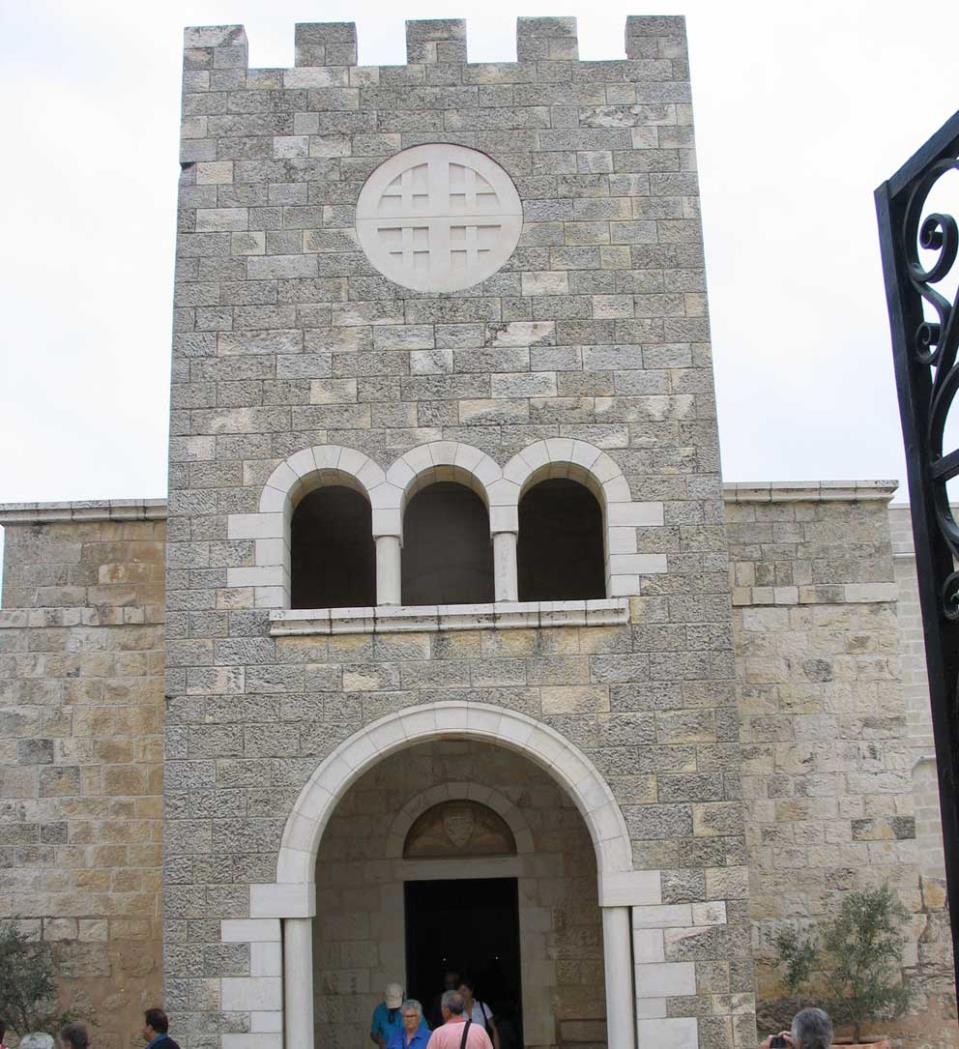
In 1870, a villager found a dressed stone bearing Crusader-epic paintings that represented the two events of the resurrection of Lazarus and Jesus' triumphal entry into Jerusalem. When the land was purchased, a little sanctuary named 'Bethphage' was built there. It was restored to its present state in 1954.
The procession that commemorates the event was taken up in the sixteenth to seventeenth centuries by the Franciscans, with the Father Custos seated on the foal of a donkey, representing Christ.
Next we visited the Chapel of the Ascension [Greek: Εκκλησάκι της Αναλήψεως] a shrine built on the Mount of Olives in Jerusalem. Here the faithful traditionally believe to be the place from where Jesus ascended into Heaven forty days after his resurrection. In it there is a slab stone believed to have one of His footprints.
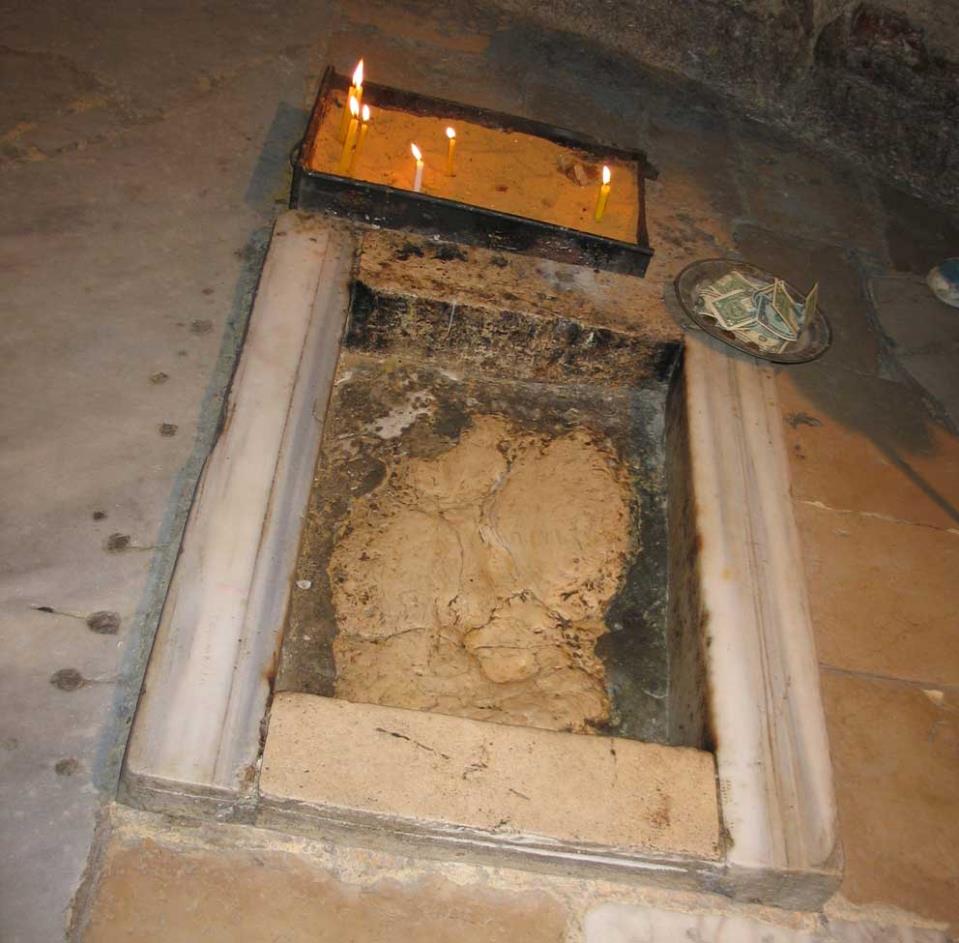
This was followed by a visit to the Church of the Pater Noster, also known as the Sanctuary of the Eleona [French: Domaine de L'Eleona 'Estate of the Olive Grove']. This is found on the Mount of Olives north of the Tombs of the Prophets. It stands on the traditional site where Jesus pronounced the Lord's Prayer. (Luke 11:2-4). Built on the site of a fourth-century basilica it was designed by Constantine I to commemorate the Ascension of Christ. It is said that it was built under the direction of Constantine's mother Helena in the early fourth century, who named it the Church of the Disciples. The pilgrim Egeria - in her account in the early 338s - was the first to refer to it as the church of the Eleona, and the historian Eusebius of Caesarea recounts that Constantine constructed a church over a cave on the Mount of Olives that had been linked with the Ascension.
On most of the walls of the complex building and those of the courtyard are affixed versions of the 'Pater Noster' in different languages, on Ceramic tiles laid side by side to form frames more than a meter wide and more than two meters high. The version in Maltese must have been put in place before 1924 because it is written in old Maltese orthography, before that established by the Għaqda tal-Kittieba tal-Malti [today Akkademja tal-Malti] in that year.
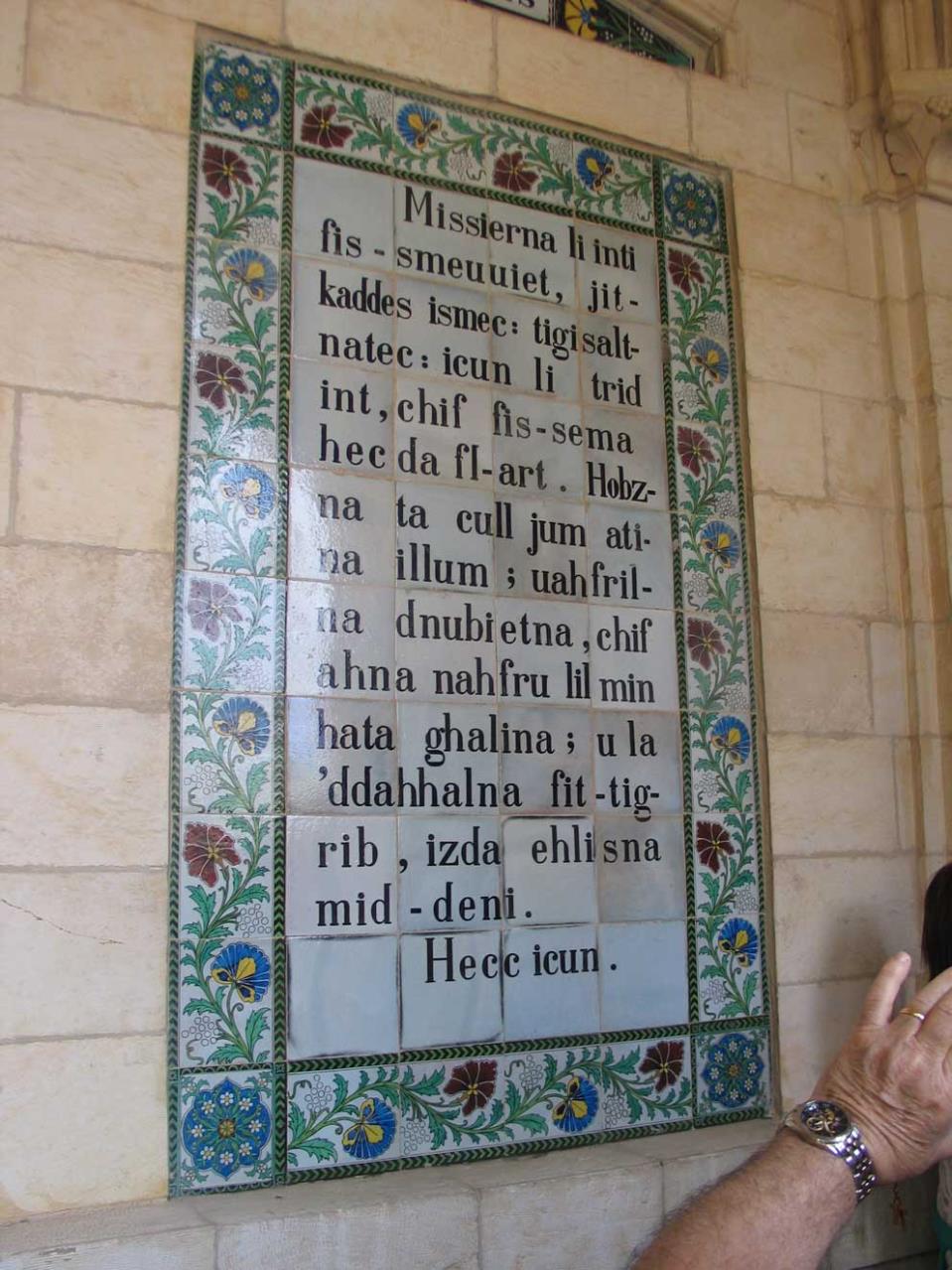
The 'pilgrimage' continued with a call at the Dominus Flevit Church [Latin for 'the Lord wept'] - on the Mount of Olives, opposite the walls of the Old City of Jerusalem. The church was designed and constructed by the Italian architect Antonio Barluzzi, in the shape of a 'teardrop' to symbolize the tears of Christ.
Here, while walking towards the city of Jerusalem, Jesus became overwhelmed by the sight of the Second Temple and, predicting its future destruction wept openly (John 11:35). Christ's weeping was unmarked until the time of the Crusades when people began commemorating the site. In the early sixteenth century a mosque or madrasah [a building used for teaching Islamic theology and religious law, typically including a mosque] existed at the site, built, presumably from the remains of an earlier church. This place was known as el Mansouriyeh ['the Triumphant'] and also el Khelweh ['the Hermitage'].
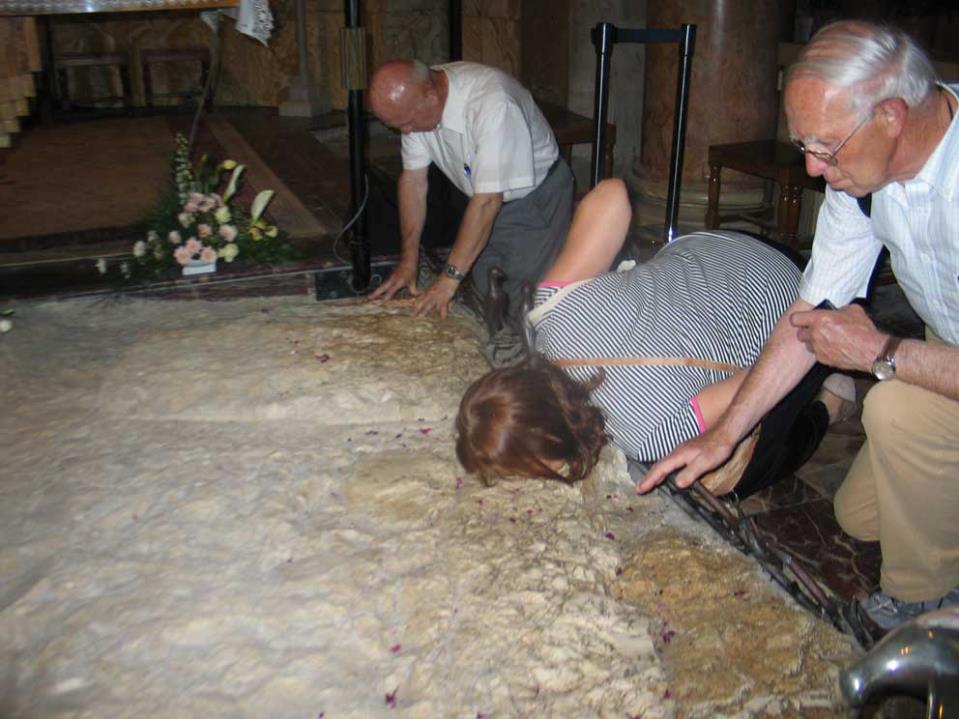
Later we walked to the Getsemani Basilica, also called the Church of All Nations, and the Church or Basilica of the Agony, next to the Garden of Gethsemane. It enshrines a section of bedrock where Jesus is said to have prayed before his arrest (Mark 14:32-42). The church rests on the foundations of two earlier ones, one abandoned in 1345, and a Byzantine basilica destroyed by an earthquake in 746. During work on the foundations, a column and fragments of a magnificent mosaic were found. This made the architect remove the new foundations. The present basilica was built between April 1922 and June 1924 when it was consecrated.
The Apostles' Grotto of Gethsemane was our next venue. The cave, commonly known as the Grotto of the Gethsemane [Aramaic 'the place of the olive oil press'] is located on the right of the Tomb of the Virgin, with its entrance at the end of a corridor. Tradition has placed here Jesus' agony in the Garden of Olives. Here he came to meet the Apostles who were resting in the cave, where eventually, Judas arrived with the guards and betrayed him.
The Franciscans took possession of the cave in 1361 and, in contrast to the Tomb of the Virgin, have continued to be its owners to the present day. Following a flood in 1955, the Custody carried out excavations which led to a number of interesting discoveries. It has, however, continued to maintain a natural appearance. In the Crusader period the vault of the cave was decorated with paintings of stars and scenes from the Gospels.
The Virgin Mary
Related to Holy Mary, we visited the Church of St Anne which marks the place where Ann and Joachim lived and gave birth to the Virgin Mary; a cave in the church is believed to be the place where Holy Mary was born.
Then we visited the Church of the Sepulchre of Saint Mary.
This is a Christian tomb in the Kidron Valley at the foot of the Mount of Olives, in Jerusalem, believed by Eastern Christians to be the burial place of Mary, the mother of Jesus. Sacred Tradition of Eastern Christianity teaches that the Virgin Mary died a natural death. Rich colourful icons cover the walls and beautiful silver chandeliers hang from the ceiling of a cave within.
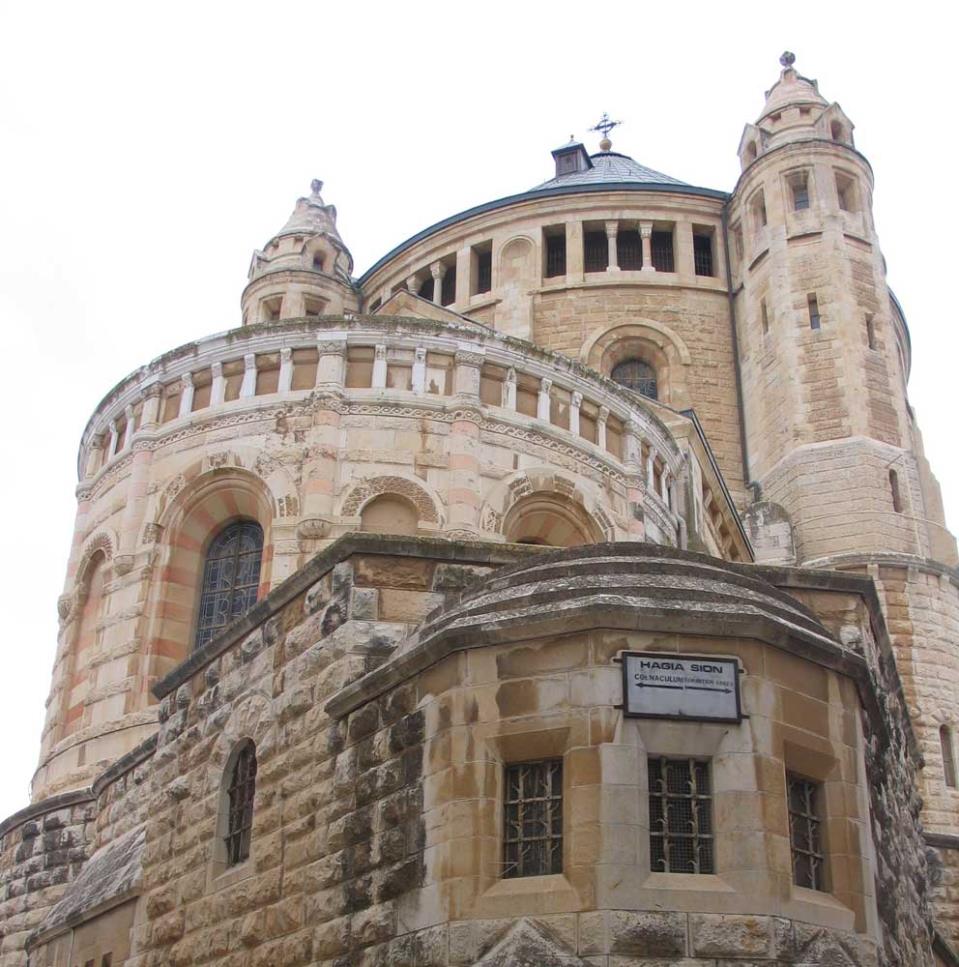
King David
After lunch we left on foot for Our Lord's Last Supper House, on Mount Sion. On the way we stopped by a large dominating statue of King David, whose burial place - the Jews believe - lays in the precincts. However, we found out that the House had been closed for refurbishment in preparation for Pope Francis' visit, later on that month.
The church of the Dormition
On top of Mount Zion, we went to the Church of the Dormition ['falling asleep'] of the Theotokos ['mother of Jesus Christ']. [Most theologians believe that Holy Mary did undergo death, and like that of any human being her soul was received by Christ upon death. However her body was resurrected into heaven on the third day after her repose [here came to mind the 'three Hail Marys for the three days in the tomb' asked of Karmni Grima, in the Madonna Ta' Pinu of Gozo, story]. Eventually the Dogma of 'The assumption of Holy Mary' proclaimed by Pope Pius XII on 1 November 1950, in the apostolic constitution Munificentissimus Deus, endorsed this belief. Her tomb was found empty on the third day.]
We entered the Sanctuary dominating Mount Zion, the highest point in ancient Jerusalem.
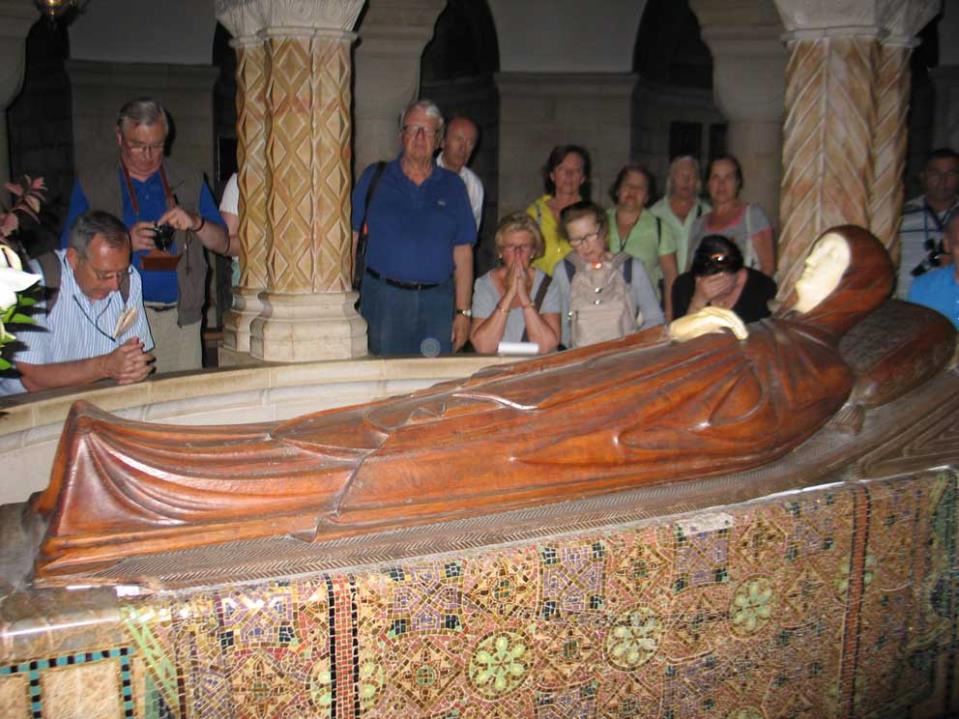
The location is identified in Christian tradition as the place where the Virgin Mary died - or 'fell asleep', as the name suggests. It is built like a fortress, on the south of the Old City's Zion Gate. Nearby soars the bell tower of the Hagia Maria Sion Abbey [formerly the Abbey of the Dormition], a Benedictine monastery.
Particularly stunning is the sculpture of Our Lady 'dormant' on a canopy, surrounded by columns, in the centre of the church. Only Mary's sweet and serene face and hands are in yellowish marble. The rest of the sculptured panneggio is chocolate brown. The body lies on a flat sort of table 'covered' by colourfully designed cloth which is made of mosaic.
Part 1
Part 2
Part 3
Part 4
Part 5